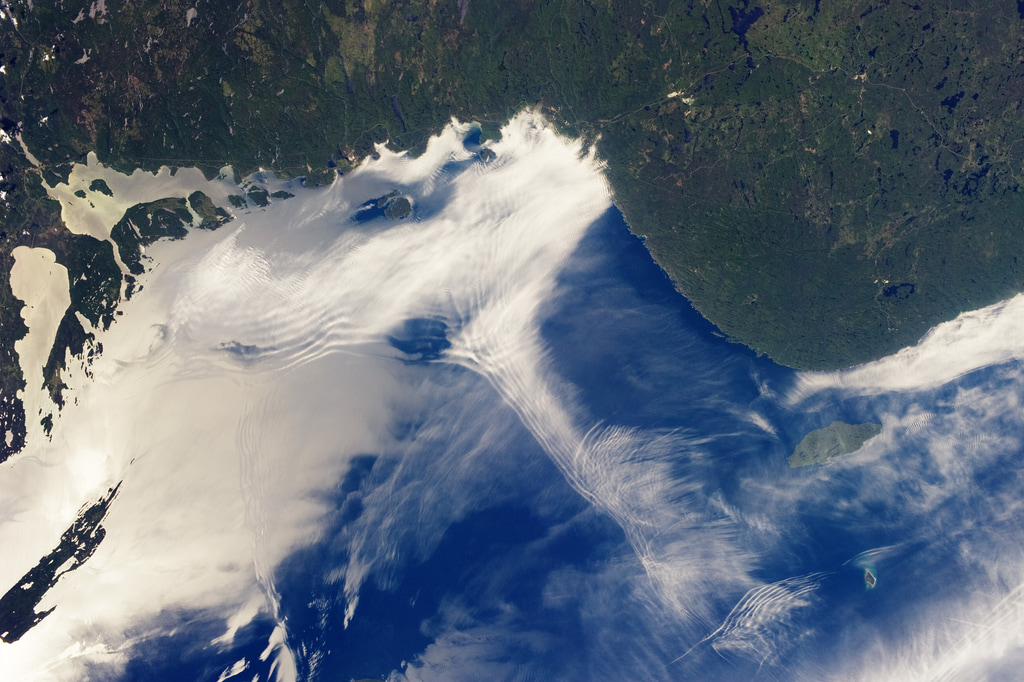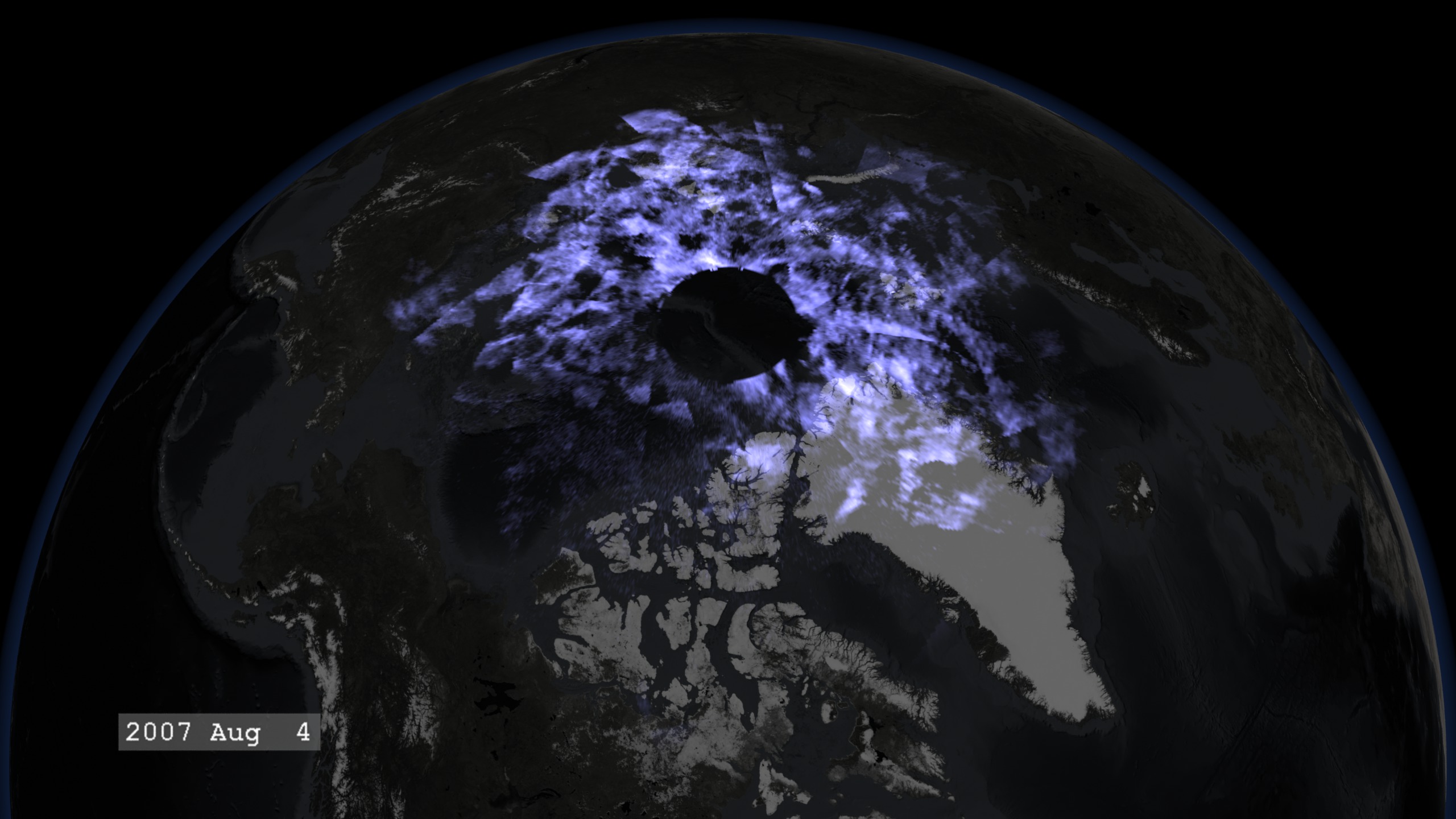Rare Electric Blue Clouds Observed By NASA Balloon
On the cusp of our atmosphere live a thin group of seasonal electric blue clouds. Forming fifty miles above the poles in summer, these clouds are known as noctilucent clouds or polar mesospheric clouds — PMCs. A recent NASA long-duration balloon mission observed these clouds over the course of five days at their home in the mesosphere. The resulting photos, which scientists have just begun to analyze, will help us better understand turbulence in the atmosphere, as well as in oceans, lakes, and other planetary atmospheres, and may even improve weather forecasting.
For more information: https://www.nasa.gov/feature/goddard/2018/nasa-balloon-mission-captures-electric-blue-clouds
Watch this video on the NASA Goddard YouTube channel.
Music credit: “In The End” By Andrew John Skeet [PRS], Andrew Michael Britton [PRS], David Stephen Goldsmith [PRS] from Killer Tracks
Complete transcript available.

A GIF optimized for Twitter.
Cameras aboard the balloon captured 6 million high-resolution images of polar mesospheric clouds that reveal processes leading to turbulence - chaotic movement in the atmosphere that can influence weather and climate, and their predictions.
Polar mesospheric clouds - also known as noctilucent clouds - were captured by NASA’s PMC Turbo mission. These clouds are affected by what’s known as atmospheric gravity waves — caused by the convecting and uplifting of air masses, such as when air is pushed up by mountain ranges. The waves play major roles in transferring energy from the lower atmosphere to the mesosphere.
Credit: PMC Turbo
Polar mesospheric clouds - also known as noctilucent clouds - were captured by NASA’s PMC Turbo mission. These clouds are affected by what’s known as atmospheric gravity waves — caused by the convecting and uplifting of air masses, such as when air is pushed up by mountain ranges. The waves play major roles in transferring energy from the lower atmosphere to the mesosphere.
Credit: PMC Turbo
Polar mesospheric clouds - also known as noctilucent clouds - were captured by NASA’s PMC Turbo mission. These clouds are affected by what’s known as atmospheric gravity waves — caused by the convecting and uplifting of air masses, such as when air is pushed up by mountain ranges. The waves play major roles in transferring energy from the lower atmosphere to the mesosphere.
Credit: PMC Turbo
Polar mesospheric clouds - also known as noctilucent clouds - were captured by NASA’s PMC Turbo mission. These clouds are affected by what’s known as atmospheric gravity waves — caused by the convecting and uplifting of air masses, such as when air is pushed up by mountain ranges. The waves play major roles in transferring energy from the lower atmosphere to the mesosphere.
Credit: PMC Turbo
Polar mesospheric clouds - also known as noctilucent clouds - were captured by NASA’s PMC Turbo mission. These clouds are affected by what’s known as atmospheric gravity waves — caused by the convecting and uplifting of air masses, such as when air is pushed up by mountain ranges. The waves play major roles in transferring energy from the lower atmosphere to the mesosphere.
Credit: PMC Turbo
Polar mesospheric clouds - also known as noctilucent clouds - were captured by NASA’s PMC Turbo mission. These clouds are affected by what’s known as atmospheric gravity waves — caused by the convecting and uplifting of air masses, such as when air is pushed up by mountain ranges. The waves play major roles in transferring energy from the lower atmosphere to the mesosphere.
Credit: PMC Turbo

The PMC Turbo gondola suspended from the launch vehicle at Esrange, Sweden.
Credit: PMC Turbo

The PMC Turbo gondola suspended from the launch vehicle at Esrange, Sweden.
Credit: PMC Turbo

The PMC Turbo payload, underconstruction.
The PMC Turbo balloon payload was equipped with seven specially designed imaging systems to observe the clouds. The seven imaging systems were arranged to create a mosaic of wide views extending one hundred miles across, with each narrow views able to image turbulence features as small as twenty yards wide. For the first time, a lidar — or laser radar — measured the precise altitudes of the PMCs as well as the temperature fluctuations of the gravity waves above and below the PMCs.
Credit: PMC Turbo

PMC-Turbo scientist Bernd Kaifler assembles the lidar telescope.
Credit: PMC Turbo

The PMC Turbo field team, consisting of (from left to right) Christopher Geach, Bernd Kaifler, Biff Williams and Bjorn Kjellstrand.
Credit: PMC Turbo

Expedition 47 Flight Engineer Tim Peake of the European Space Agency photographed rare, high-altitude noctilucent clouds - also known as polar mesospheric clouds - from the International Space Station on May 29, 2016.
Credit: ESA/NASA

Atmospheric gravity waves over the Arabian Sea.
More information: https://earthobservatory.nasa.gov/images/5528/atmospheric-gravity-waves-over-arabian-sea
Credit: NASA/MODIS

Gravity waves and sunglint on Lake Superior in North America.
More information: https://earthobservatory.nasa.gov/images/81650/gravity-waves-and-sunglint-lake-superior
Credit: ISS
For More Information
See the following sources:
Credits
Please give credit for this item to:
NASA's Goddard Space Flight Center
-
Producer
- Joy Ng (USRA)
-
Writer
- Mara Johnson-Groh (Wyle Information Systems)
-
Data visualizers
- Tom Bridgman (Global Science and Technology, Inc.)
- William Putman (NASA/GSFC)
Release date
This page was originally published on Thursday, September 20, 2018.
This page was last updated on Wednesday, May 3, 2023 at 1:46 PM EDT.

![NASA's Scientific Balloon Program OverviewComplete transcript available.Music Credit: “Enviro Tense” by Max Van Thun [GEMA] via Universal Production Music](/vis/a010000/a014400/a014429/14429_Balloon_Program_thumbnail.jpg)

